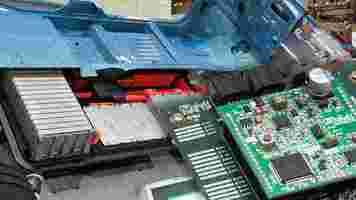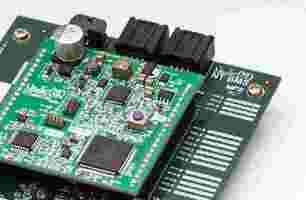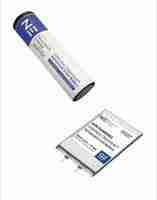Did you catch all those Super Bowl EV ads? Well, WE RATED THEM
This Sunday saw Super Bowl LVI, an event where the half-time entertainment and TV commercials are as much a part of the occasion as the game itself.

And in the year of our lord 2022? EV makers went all in, spending a sizable chunk of their marketing budgets on advertising.
So, how do they stack up? And who were the winners and losers? Let’s take a look:
BMW
BMW’s effort brings an update and electrification to Greek mythology. Gods Zeus (Arnold Schwarzenegger) and Hera (Salma Hayek Pinault) retire to Palm Springs, California.
To keep the spark alive, Hera gifts Zeus with a shiny new EV BMW iX , and Zeus spends his time driving around, electrifying the world with a point of his finger.
Well, my Greek colleague Ioanna already had a lot of feels about this. As she notes:
Verdict: ⚡⚡⚡
It’s a funny ad, but honestly, it alarms me how many people on YouTube want this to be an actual movie. Too many people inspired by the TV show American Gods ? Or is it a desire to return to Arnie as Hercules?
General Motors
Austin Powers is back, baby!
Dr Evil and his cronies have taken over the GM Renaissance Center headquarters, where the criminal mastermind learns that he is becoming a grandfather of a “Baby-me.”
Even worse, they’re no longer the dominant force for global destruction. “Climate change is arguably the number one threat in the world right now,” explains Scott Evil.
So, a dastardly plan is hatched to take over the world… to retain the power to destroy it?
Yeah, it’s a weird and convoluted storyline. But it’s a good cast, and the ad eventually promotes the fact that GM will launch “30 EVs globally by 2025.”
Verdict:⚡⚡⚡
If you like an all-star cast that includes Rob Lowe and Seth Green, this one’s for you.
And yes, people on YouTube are begging for Austin Powers 4 .
Kia
With the tagline “every dog deserves to find their forever home,” you know this advert is for all of you on the sofa, nursing a hangover, and trying to stop your dog from eating the leftover chicken wings you were too drunk to put away yesterday.
With a soundtrack of Bonnie Tyler’s ‘ Total Eclipse of the Heart ,’ it shows a cute robodog (no, not the one from Black Mirror ) desperately trying to find their owner, someone who drives Kia’s all-electric EV6.
They reunite at the EV charger just in time to give the pup a hit of electric juice.
Verdict: ⚡⚡⚡⚡
I’m a sucker for a robot. After the brand discontinued production, I’m still traumatized from writing about the mass Buddhist funeral given for the 2017 version of Sony’s robot dog Aibo .
This ad gave me all the feels, but made me forget all about the car. I just want a Nissan robodog now.
Chevrolet
Chevy is changing with the times, popping its EV cherry with the fully-electric Silverado.
This ad celebrates the occasion with a homage to the hit TV series, The Sopranos . Meadow (Jamie-Lynn Sigler) reenacts the show’s opening scene, meeting up with A.J. Soprano (Robert Iler) at an EV charger.
With the dulcet tones of The Sopranos’ theme song — Alabama 3’s ‘ Woke Up This Morning ,’ — the ad introduces a “whole new truck for a whole new generation.”
Verdict: ⚡⚡⚡⚡⚡
What can I say? I used to like The Sopranos. I’ve tried introducing it to my younger spouse, who says it’s too dull (sacrilege!), but this was an excellent ad for Chevy and a great homage to the hit show.
Nissan
You don’t need to do much when you have a great car, but Nissan really steps up.
In this ad for its Z sports car, Eugene Levy goes from goofy to long-haired action movie star, dodging burning helicopters and an exploding world where the car flies smoothly through the chaos.
His female co-stars drive up to a movie premiere in an Ariya electric crossover , where they collect Eugene and drive off into the sunset.
It’s a strange ad.
The Nissan Z is powered by a V6 engine, not electric batteries. And the Ariya is motor-powered, but aided by an electric extended range. The company aims to roll out 23 new electrified models by 2030, with 15 fully electric.
So, this seems a little backward.
Verdict: ⚡⚡
The Nissan Z is a seriously sleek-looking car and has an audience of buyers anxiously awaiting its arrival. But it’s not an EV, and at a time where companies are seriously trying to assert their green cred, it seems really out of touch.
But, if Nissan decided to make a flying sports car, I, for one, would be all in.
Polestar
Polestar goes in a completely different direction from its competitors. There’s no evocative music, actors, or heartstring pulling.
But there’s also no dieselgate , hidden promises or greenwashing . And, with a sneaky sideswipe at Tesla , “no conquering Mars.”
Verdict: ⚡⚡⚡⚡
This is the kinda ad that makes me think of people who wear black ringed square glasses, talk about “new media,” and drink espresso martinis. I’m not sure I’m cool enough for it, but I like its simplicity.
Wallbox EV charging
Who better to talk about electric vehicle charging than a dude who’s been struck by lightning?
In a pitch for the Wallbox EV charger, this ad just does that, with the protagonist showing a montage of his fears of electricity . He then ultimately concedes that an electric, greener future is vital, and that Wallbox helps him move forward from his fear.
Verdict: ⚡⚡⚡
It’s a nice hook for people who fear being electrocuted by an EV charger, but there’s some serious soul missing in this one.
The Super Bowl is a big event for advertisers keen to get big brand recognition from a global audience of millions. And this year, the repeated presence of EVs shows just how far automakers have come in ushering their arrival into a captive audience.
Overall, I think this year’s ads use nostalgia as a way to usher in an electric future. Whether you grew up watching Austin Powers or The Sopranos — or are new to the characters — these ads offer multigenerational appeal.
Now let’s just hope they can actually make a difference.
EV battery management systems explained in really simple terms
Welcome to SHIFT Basics , a collection of tips, explainers, guides, and advice to keep you up to speed with mobility tech.

I’ve been watching a lot of electric vehicle restomod videos on YouTube lately . There’s something quite cathartic about watching a rusted old heap transform into a zero emission beauty.
The principles behind electric restomods are simple: take an old car, restore it aesthetically, remove the old engine, fabricate some custom mounts, and throw in an electric motor and some batteries.
In reality, it’s never that simple. There are quite a few more vital components that need to be installed. One that gets mentioned a fair bit, is the battery management system (BMS). But what is it, and what does it do?
It’s all about safety
Its name is kind of self explanatory… the battery management system manages your EV’ s high-voltage battery — the big block that makes it ‘go’ — but there’s actually a lot more to it than that.
The reason why many are baffled by battery management systems (BMS) is because it’s basically new tech. There’s not really an equivalent in earth-killing gas cars, but we could say it’s like the ECU. Overseeing what the car is doing, watching out for component failures, and relaying information about fuel economy back to the driver.


In essence though, the BMS in an EV is a critical safety feature.
In hardware terms, the BMS is a collection of purpose built circuit boards and processors that compute input from the battery, and provide an output that either tells the driver something, or tells another part of the car to do something.
It’s there to keep a watchful eye over what your EV’s battery is doing, how it’s feeling, and y’know just generally relaying its vibe.
Seriously though, high-voltage EV batteries are dangerous bits of kit when they don’t operate within set parameters. If batteries aren’t looked after, they could catch fire, overheat, or become unusable — so the BMS makes you and the EV less dead.
What’s it doing?
For a BMS to work effectively it needs data; it needs to know what’s happening in the battery constantly.
A BMS will take regular readings of temperature, voltage, current, and even coolant flow, so that it can make sure the power pack is operating safely. It will also calculate the battery’s charge level, and relay that to the driver, so they know their range.
When it comes to voltage, the BMS doesn’t just monitor the overall voltage of the battery. It can monitor individual cells and packs. If a cell fails, the BMS will be able to identify it, and stop using it to ensure it doesn’t become a hazard.
The BMS will also monitor the flow of electricity in and out of the battery. For example, when fast-charging, the BMS will ensure the battery is receiving the correct amount of volts to charge as fast as possible without damaging the individual cells.
One of the most important things that a BMS does is monitor the battery’s thermal state. To do this, the BMS continually reads the battery’s overall average temperature, coolant temperatures, and even the temperatures of individual cells.
Lithium-ion cells used in EV batteries last longest and charge best when kept within predetermined temperature limits.
It’s the BMS’ job to continually monitor the battery, and step in if it’s getting too hot. In EVs with active cooling, the BMS can trigger battery cooling systems to ensure its safe operation.
On hot days, when fast-charging, it’s quite common to hear an EV’s cooling system kick into action to keep the batteries at a safe temperature.
It’s a brain
Whilst the battery management system is primarily concerned with monitoring an EV’s battery, it does so much more than that.
It interacts with a host of other important components such as the internal charging controller, the motors, and external chargers, too.
In all these cases the BMS checks in with battery, to make sure it’s operating as it should, before communicating with the other components to tell them it’s ok to draw power.
Without a BMS, batteries would be unsafe, wouldn’t last very long, and EVs just wouldn’t work. Spare it a thought sometime.
Do EVs excite your electrons? Do ebikes get your wheels spinning? Do self-driving cars get you all charged up?
Then you need the weekly SHIFT newsletter in your life. Click here to sign up .
This new graphene-based battery can stop EVs from bursting into flames
Lithium-ion batteries have transformed the EV industry, but they don’t come without their disadvantages. You know, like the fact they sometimes cause EVs to burst into flames and explode.

LA startup Nanotech Energy claims to have found a way to eliminate this concern once and for all: a fireproof, graphene-based lithium-ion battery. And if this battery can do what it’s promised, we’re talking about a true game changer.


Graphene is a single layer of carbon atoms, with a bunch of remarkable physical properties: it’s ultrathin, incredibly strong, superconductive, and cheap.
It was first discovered by in 2004 by two researchers a t the University of Manchester, who managed to extract and isolate it from graphite. Although we reached out to the researchers for this article, they unfortunately declined to comment.
Nanotech has developed graphene electrodes, namely, the battery’s positive (cathode) and negative (anode) terminal.
According to the company, graphene’s flexibility means that it can withstand the volume changes of the battery electrodes during charge and discharge. This reduces the chances of an internal short circuit, which can potentially lead to fire.
What’s more, graphene is an excellent conductor of electricity, which helps the battery maintain a lower internal resistance — simply, the ability to maintain a lower internal temperature. As as result, it provides an efficient solution to overheating during charging, which is another potential cause of fire.
The electrolyte is a vital part of a lithium-ion battery, as it transfers lithium ions between the two electrodes during charge and discharge.
But… it’s the battery’s most flammable component.
Most electrolytes in use today involve dissolving a lithium salt in a liquid material composed primarily of linear and cyclic chain carbonates. Basically, molecules that involve a carbon atom attached to three oxygen atoms. These liquids are typically flammable, and can be volatile and unstable when exposed to high temperatures.
Nanotech has developed a proprietary electrolyte solution, called OrganoLyte, that is “stable, made from inexpensive materials, easy to manufacture and, of course, is non-flammable.”
While no specifics have been disclosed, the name suggests the material still centers around organic chemistry. We’ve reached out to the company to know more about it, and we’ll update the article when we have more information to share with you.
Nanotech has run a series of tests to demonstrate that its graphene-OrganoLyte battery shows enhanced thermal stability and eliminates the risk of fire.
In the short video below, the company conducts a nail abuse test and a heating test at 180 degrees Celsius. In both, the standard lithium-ion battery used instantly catches fire, while the graphene battery remains unharmed.
Testing has yielded some impressive results: the battery maintains performance at extreme temperatures (-20 to 60 degrees Celsius), it holds charge at temperatures as high as 176 degrees, and won’t catch fire when penetrated with a nail, or heated to more than 704 degrees.
But more than that, Nanotech also claims that its battery is extremely powerful. Namely, i t retains more than 80% of its rated capacity through 1,400 cycles, and can charge “18 times faster than anything that is currently available on the market.”
Plus, the company’s new batteries can be “completely personalized to fit any form factor or container” — and can be used for consumer electronics, electric vehicles, and any electrified machines.
I guess, that’s why Nanotech’s batteries won the CES 2022 Innovation Award .
Nanotech’s non-flammable lithium-ion batteries are set to be manufactured at a newly announced production plant in Nevada, scheduled to open in the fourth quarter of 2022.
I expect that initial production will focus on the consumer electronics market, as the batteries’ application in automotive use would require further durability, reliability, and safety testing. This might take some extra few years and I’m really looking forward to see the battery in action.